

By: Keith A. Hecht, PharmD, BCOP

https://www.siue.edu/pharmacy/departments-faculty-staff/bio-hecht-keith.shtml
Medical Policy In Decision Considerations pulse pressure 15 purchase furosemide canada, Disease Protocols Graded Exercise Stress Test Requirements arrhythmia games buy furosemide with american express, revise to heart attack karaoke demi lovato buy 100 mg furosemide free shipping remove hyperventilation requirement from testing arrhythmia joint pain purchase furosemide 100mg on line. Medical Policy In Pharmaceuticals (Therapeutic Medications) revise to embody chart of Acceptable Combinations of Diabetes Medications. Revise Colitis 463 Guide for Aviation Medical Examiners Dispositions Table and Colitis Special Issuance criteria to mirror the change. Medical Policy In Disease Protocols, Cardiovascular Evaluation, revise to clarify criteria. Medical Policy In Disease Protocols, Coronary Heart Disease, revise to clarify criteria. Medical Policy In Disease Protocols, Graded Exercise Stress Test Requirements, revise to clarify criteria. Medical Policy In Pharmaceuticals (Therapeutic Medications) Anticoagulants and in Disease Protocols Thromboembolic Disease, revise to coverage embody required wait time after preliminary start of warfarin (Coumadin) treatment. Medical Policy In Pharmaceutical (Therapeutic Medications), Acne Medications, revise coverage to 464 Guide for Aviation Medical Examiners embody language on use of topical zits medications, corresponding to Retin A, and oral antibiotics, corresponding to tretracycline. Neurologic, revise the Cerebrovascular Disease inclinations table to increase on criteria for Transient Ischemic Attack, Completed Stroke (ischemic or hemorrhagic), and Subdural, Epidural or Subarachnoid Hemorrhage. Medical Policy In Disease Protocols itemizing, rename ?Substances of Dependence/Abuse (Drugs and Alcohol) to ?Psychiatric Substances of Dependence/Abuse (Drugs and Alcohol. Administrative Add up to date link for the International Standards on Personnel Licensing. Medical Policy In Pharmaceuticals, Malaria Medications, replace coverage data relating to the use of mefloquine. Medical Policy In Special Issuances, replace coverage for prednisone usage for treatment of Asthma, Arthritis, Colitis, and/ or Chronic Obstructive Pulmonary Disease. Medical Policy In Special Issuances, revise introductory language to clarify necessities for deferral. Medical Policy In Pharmaceuticals, add data web page on Sleep Aids, together with wait occasions. Heart Syncope, appropriate typographical error: bilatcarotid Ultrasound to bilateral carotid Ultrasound. Medical Policy Revise language in all Certification Worksheets: (Arthritis, Asthma, Renal Cancer, Glaucoma, Hepatitis C, Hypertension, Hypothyroidism, Migraine Chronic Headaches, and Pre Diabetes) to add ?Applicants for first or second class must provide this data annually; applicants for third-class must provide the data with every required examination. Spine and Other Musculoskeletal, revise Arthritis Worksheet to embody link to steroid conversion calculator. General Systemic Pre-Diabetes, Diabetes, Metabolic Syndrome, and/or Insulin Resistance, revise inclinations table to embody Polycystic Ovary Syndrome. General Systemic Pre-Diabetes, Diabetes, Metabolic Syndrome, and/or Insulin Resistance, revise Pre Diabetes Worksheet to embody Polycystic Ovary Syndrome. Administrative In Archives and Modifications, change title to ?Archives and Updates. Spine and Other 468 Guide for Aviation Medical Examiners Musculoskeletal, revise inclinations table for Arthritis. G-U System Neoplastic Disorders, revise inclinations table for Prostatic, Renal, and Testicular Carcinomas. General Systemic Endocrine Disorders, revise inclinations table for Hypothyroidism. Neurologic 469 Guide for Aviation Medical Examiners Headaches, revise inclinations table for Migraine and Chronic Headache. General Systemic Diabetes, Metabolic Syndrome, and/or Insulin Resistance, revise inclinations table to add Pre-Diabetes. In Disease Protocols, delete protocol for Medication Controlled Metabolic Syndrome (Glucose Intolerance, Impaired Glucose Tolerance, Impaired Fasting Glucose, Insulin Resistance, and Pre-Diabetes) 12. In Disease Protocols, revise Diet Controlled Diabetes Mellitus and Metabolic Syndrome. Also, in Pharmaceuticals part, revise name of protocol link to mirror title change. In Pharmaceuticals, Antihypertensives, change name of protocol link from Hypertension Protocol to Hypertension Worksheet. Medical Policy In Disease Protocols, add Specifications for Neuropsychological Evaluations for Potential Neurocognitive Impairment. Medical Policy In Disease Protocols, add Specifications for Psychiatric Evaluations. Medical Policy In Disease Protocols, add Specifications for Psychiatric and Psychological Evaluations. Medical Policy In Disease Protocols, add Specifications for Psychiatric and Neuropsychiatric Evaluations for Substance Abuse/Dependence. Psychiatric Conditions, revise table to embody reference to new Psychiatric Specification Sheets. Psychiatric Conditions, revise Table of Medical Dispositions to embody additional evaluation guidance. Color Vision, revise to state that use of laptop purposes, downloaded variations, or printed variations of shade imaginative and prescient checks are prohibited for evaluation. G-U System, remove data on ?Contraceptives and Hormone Replacement Therapy. G-U System, revise guidance on Gender Identity Disorder to specify necessities for current status report, psychiatric and/or psychological evaluations, and surgical procedure comply with-up reports. Medical Policy In Pharmaceuticals, Allergy Desensitization Injections, Change the title and references to Allergy Immunotherapy. Heart, remove requirement for reporting serum potassium values if the airman is taking diuretics. Medical Policy In Protocol for Evaluation of Hypertension, remove requirement for reporting serum potassium if the airman is taking diuretics. Heart Dispositions Table, Coronary Artery Disease, revise table to clarify evaluation information required for third class. Medical Policy In Pharmaceuticals (Therapeutic Medications) part, change title of Antihistaminic and Desensitization Injections to embody the word ?Allergy. Medical Policy In Pharmaceuticals (Therapeutic Medications) Acne Medications, revise web page format to clarify coverage. Medical Policy In Pharmaceuticals Insulin, revise to clarify guidance on medication combinations. Medical Policy In General Information, Equipment Requirements, revise to embody gear to measure peak and weight. Medical Policy In Pharmaceuticals, Antidepressants, revise to clarify medical history, protocol, and pharmaceutical concerns. Administrative In Pharmaceuticals Antihypertensive, revise to clarify unacceptable medications. Administrative In Disease Protocols, Hypertension, revise to clarify unacceptable medications. Errata Revise to appropriate transposed phrases in title: Decision Considerations, Disease Protocols ?Graded Exercise Stress Test Bundle Branch Block Requirements. Medical Policy In Pharmaceuticals (Therapeutic Medications) Desensitization Injections, revise and clarify criteria for hay fever medications. Medical Policy In Exam Techniques, Item 21 22 Height and Weight, add Body Mass Index Chart and Formula Table. Medical Policy In Aerospace Medical Dispositions, Item 48, General Systemic, clarify disposition for Hyperthroydism and Hypothyrodism. Administrative In Aerospace Medical Dispositions, Item 47, Psychiatric Conditions Table of Medical Dispositions, clarify ?see beneath data in Evaluation Data column. Medical Policy In Disease Protocols, Binocular Multifocal and Accommodating Devices, clarify criteria for adaptation interval before certification. Medical Policy In Applicant History, Item 17b, revise and clarify criteria relating to use of types of contact lenses. Medical Policy In Exam Techniques, Items 31 34 Eye Contact Lenses, revise and clarify criteria. History of Arrest(s), Conviction(s), and/or Administrative Action(s), revise and clarify deferral and issuance criteria. Medical Policy In Disease Protocols, revise major itemizing to mirror addition of ?Diabetes Mellitus and Metabolic Syndrome Diet Controlled and ?Metabolic Syndrome (Glucose Intolerance, Impaired Glucose tolerance, Impaired Fasting Glucose, Insulin Resistance, and Pre-Diabetes) Medication Controlled. General Systemic Diabetes, Metabolic Syndrome, and/or Insulin Resistance, revise table to mirror addition of ?Diabetes Mellitus and Metabolic Syndrome Diet Controlled and ?Metabolic Syndrome (Glucose Intolerance, Impaired Glucose tolerance, Impaired Fasting Glucose, Insulin Resistance, and Pre-Diabetes) Medication Controlled.
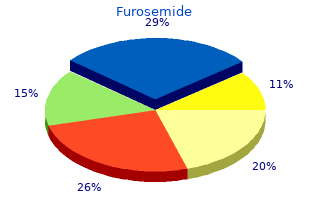
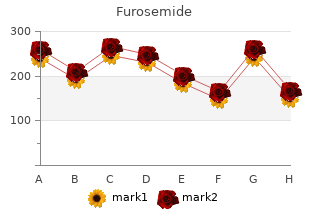
Combining completely different approach arteria jugularis interna generic 40mg furosemide fast delivery, as local pixel segmentation arrhythmia yahoo answers buy furosemide 40mg with visa, could be refine the results arrhythmia occurs when 100 mg furosemide fast delivery. Specialized U-web ought to be constructed and trained to hypertension readings cheap furosemide online visa improve Segmentation results on small tumors. Choice of loss operate and resampling methods, influence learning considerably. Brain tumor segmentation is a difficult activity necessary for quantitative tumor analysis and diagnosis. We go on to extract intensity and form options from the images and cross-validate machine learning fashions to predict total survival. Keywords: Glioblastoma Segmentation Neural Network Quantita tive Imaging 1 Introduction Gliomas are extremely malignant main brain tumors that carry a dismal me dian total survival of 15 months for high grade tumors [1]. One characteristic that contributes to this poor survival is the substantial heterogeneity and di? Successful and automated detection of those subvolumes is a key step in quantitative analysis towards patient danger strati? We go on to extract form and intensity options from the sub-volumes to predict patient total survival. The imaging information is brain extracted, registered, and resampled to 1 mm isotropic voxel measurement. Each topic has a ground truth segmentation with four labels, non tumor (label zero), necrotic and non-enhancing tumor core (label 1), peritumoral edema (label 2), and Gadolinium-enhancing tumor (label four). The same preproccesing steps have been also utilized to the validation information set before segmenting. The preliminary results for the sixty six sufferers within the validation set are proven in Table 1. We also performed a full inference on the 5% of training set circumstances which have been excluded from the mannequin training process, in order that we will evaluate the performance of the mannequin in opposition to the ground truth segmentations. Mean values for metrics from segmentations on the training and validation information units. Red is non-enhancing tumor and necrosis, green is edema, and yellow is enhancing tumor. We used this clinical information and options extracted from segmentations to predict the overall survival in days. After figuring out one of the best mannequin, we utilized it to the 28 problem validation set circumstances with patient age and gross total resection status. The problem assesses the predictions primarily based on the accuracy: total variety of circumstances correctly assigned a survival < 10 months, between 10 and 15 months, and > 15 months. For the survival activity, we further pre-processed the data by normalizing primarily based on refer ence tissue intensities. Creating a consistent intensity scale between sufferers allows pictures options to discriminate brief and lengthy survival sufferers. Using the imply intensity for a pair of reference tissues, each voxel within the image was linearly scaled to map the imply intensities to zero and 1 respectively. For each image and area pair we calculated the imply intensity utilizing the Pyradiomics software program package deal [9]. We also calculated the volume of each area, so the entire variety of options considered is. We partitioned the training information into 80% training and 20% testing information with an roughly equal proportion of brief, medium, and lengthy survivors in each set. Using the 80% partition, we performed variable selection and trained a number of lessons of predictive fashions utilizing leave-one-out cross validation. We selected the mannequin with the highest Pearson correlation (R2) between predicted and noticed total survival within the cross validation and made predictions on the testing set to see how nicely the mannequin generalized. For feature selection we consecutively utilized univariate, multivariate, and step-wise feature elimination. After each selection step the resulting variables have been saved as a attainable set of inputs to predictive fashions. First, we used a Cox mannequin to individually decide which image options have been signi? Next, the remaining options have been fed right into a multivariate Cox mannequin to reduce redundancy. In addition, we utilized the Boruta method [eleven] to select variables predictive of total survival. The Boruta method is predicated on variable significance from the random forest algorithm, which has historically been a top performing machine leaning mannequin. Flowchart depicting the modeling process and variable selection methods for predicting total survival. Several variable selection methods primarily based on the cox mannequin are used to generate input units for predictive fashions. Before any variable selection 20% of the training information is held out for testing and the remaining 80% is used to select one of the best variable and mannequin mixture. We tested linear fashions, neural networks, and random forests to predict total survival. Among the imply intensities for each image over each area, the area vol umes, and the patient age, we found? Among the candidate fashions we tested (random forest, neural community, linear mannequin) the linear mannequin performed finest with R2 = zero. Surprisingly, this straightforward linear mannequin performed considerably higher on the testing information and on the chal lenge validation dataset. Performance metrics for our linear mannequin on the training information: (80% of 163 supplied circumstances), testing information (20% of 163 supplied circumstances), and validation information (26 circumstances with out identified survival). Their mannequin achieved higher segmentation results by averaging results throughout an ensemble of six di? The root imply sq. error for continuous prediction is on the order of 300 days, which is corresponding to the vary seen among all sufferers. We have been in a position to produce good results utilizing two extremely primitive image mea surements (imply intensity and volume) and a linear regression mannequin. Using these segmentations and easy image options we have been in a position to predict total survival with cheap accuracy. Roger Stupp, Warren P Mason, Martin J van den Bent, Michael Weller, Barbara Fisher, Martin J B Taphoorn, Karl Belanger, Alba A Brandes, Christine Marosi, Ulrich Bogdahn, J? Bjoern H Menze, Andras Jakab, Stefan Bauer, Jayashree Kalpathy-Cramer, Key van Farahani, Justin Kirby, Yuliya Burren, Nicole Porz, Johannes Slotboom, Roland Wiest, and Others. Spyridon Bakas, Hamed Akbari, Aristeidis Sotiras, Michel Bilello, Martin Rozy cki, Justin S Kirby, John B Freymann, Keyvan Farahani, and Christos Davatzikos. S Bakas, H Akbari, A Sotiras, M Bilello, M Rozycki, J Kirby, J Freymann, K Fara hani, and C Davatzikos. Kelvin K Leung, Matthew J Clarkson, Jonathan W Bartlett, Shona Clegg, Clif ford R Jack Jr, Michael W Weiner, Nick C Fox, S? Joost J M van Griethuysen, Andriy Fedorov, Chintan Parmar, Ahmed Hosny, Nicole Aucoin, Vivek Narayan, Regina G H Beets-Tan, Jean-Christophe Fillion Robin, Steve Pieper, and Hugo J W L Aerts. Ensembles of multiple fashions and ar chitectures for robust brain tumour segmentation. A semi-automatic image segmentation method primarily based on workflow fa miliar to clinical radiologists is proposed. The consumer initializes 3D segmentation by drawing a protracted axis on a multi-airplane reformat. As the consumer attracts, a 2D seg mentation updates in real-time for interactive feedback. Keywords: Brain tumor, image segmentation, semi-automatic, machine be taught ing 1 Introduction Evidence from cancer researchers suggests that extraction of quantitative variables from medical pictures can contribute extra info for choice help in handle ment of cancer sufferers. Specifically, quantitative metrics can improve both 1) diag nostic and prognostic accuracy; as well as 2) longitudinal monitoring of patient re sponse [1]. Currently, radiological research are generally restricted to detection and staging together with qualitative descriptions. Although guide delineation provides complete management to the consumer, humans exhibit great variability and the method may be very time-consuming. The motivation is adoption by clinical radiologists who desire full-management over the segmentation, real-time feedback, an algorithm that is ready to run immediately with out the necessity to first be trained on a large database from their web site, and an algorithm whose rationale behind choices is explainable. Drawing the longest axis throughout a lesion is a natural selection for initiating con excursions as a result of radiologists are already accustomed to drawing the lengthy axis. Oncolo gists taking part in clinical trials follow published international standards for objectively gauging the extent and progression of illness.
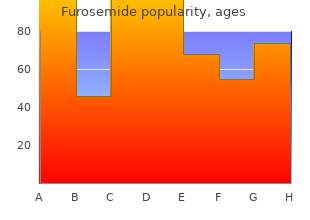
It is usually attainable to heart attack grill dallas cheap furosemide 100 mg otc draw a clinical distinction between motor symptoms resulting from decrease or upper motor neurone pathology and hence to prehypertension 2016 buy furosemide 40 mg without a prescription formulate a differential diagnosis and direct investigations accordingly blood pressure chart diabetes generic furosemide 100mg on line. Brief report: macrographia in excessive-functioning adults with autism spectrum dysfunction hypertension signs and symptoms treatment buy furosemide american express. Cross References Micrographia; Tremor Macropsia Macropsia, or ?Brobdingnagian sight, is an illusory phenomenon in which the scale of a usually acknowledged object is overestimated. This could occur as a result of anastomoses between the center and pos terior cerebral arteries preserve that part of area 17 essential for central vision after occlusion of the posterior cerebral artery. Cortical blindness as a result of bilateral (sequential or simultaneous) posterior cerebral artery occlusion could go away a small central? Macula splitting, a homonymous hemianopia which cuts by way of the verti cal meridian of the macula, happens with lesions of the optic radiation. Hence, macula sparing and macula splitting have localizing value when assessing homonymous hemianopia. Diabetes mellitus: oedema and exhausting exudates at the macula are a typical reason for visual impairment, particularly in non-insulin-dependent diabetes mellitus. Main d?accoucheur is so called because of its resemblance to the posture of the hand adopted for the handbook delivery of a child (?obstetrical hand?). This tetanic posture could develop in acute hypocalcaemia (induced by hyperventilation, for example) or hypomagnesaemia and re? Cross Reference Charcot joint Man-in-a-Barrel ?Man-in-a-barrel is a clinical syndrome of brachial diplegia with preservation of brainstem perform and of muscle power in the legs. This most normally happens as a result of bilateral borderzone infarcts in the ter ritories between the anterior and middle cerebral arteries (?watershed infarction?). Acute central cervical twine lesions may also produce a ?man-in-a-barrel syndrome, for example, after severe hyperextension injury or after unilateral vertebral artery dissection causing ante rior cervical spinal twine infarction. Likewise, bilateral neural gic amyotrophy can produce an acute peripheral man-in-a-barrel phenotype. Peripheral ?man-in-the-barrel syndrome: two instances of acute bilateral neuralgic amyotrophy. Cross References Flail arm; Quadriparesis, Quadriplegia Marche a Petit Pas Marche a petit pas is a dysfunction of gait characterised by impairments of steadiness, gait ignition, and locomotion. This gait dysfunction is usually related to dementia, frontal release signs, and urinary incontinence, and typically with apraxia, parkinsonism, and pyramidal signs. Normally the responses are equal however in the presence of an afferent conduction defect an inequality is manifest as pupillary dilatation. Cross References Hypomimia; Parkinsonism Masseter Hypertrophy Masseter hypertrophy, both unilateral or bilateral, could occur in people susceptible to bruxism. The signal was initially described in a number of sclerosis however could occur in other myelopathies affecting the twine at any point between the foramen magnum and the decrease thoracic area. The mechanism is presumed to be stretch-induced conduction block, as a result of demyelinated plaques or other pathologies, in the cor ticospinal tracts. Ipsilateral tongue paresis and atrophy, fasciculations (hypoglossal nerve involvement);. Contralateral lack of position and vibration sense (medial lemniscus) with pain and temperature sensation spared;. A number of other, eponymous, signs of meningeal irritation have been described, of which one of the best identified are those of Kernig and Brudzinski. Moreover, meningism could also be absent regardless of the presence of meningitis in the aged and those receiving immunosuppression. Metamorphopsias are sometimes transient and episodic, occurring, for exam ple, throughout migraine assaults, epileptic seizures, with psychotropic drug abuse, and following petechial intraparenchymal haemorrhages. Retinal illness causing displacement of photoreceptors could produce metamorphopsia: micropsia as a result of receptor separation in retinal oedema, macropsia as a result of recep tor approximation in retinal scarring. Occasional instances of metamorphopsia have been reported with lesions of the optic chiasm, optic radiation, and retrosple nial area. Indeed, it appears that evidently metamorphopsia could occur with pathology at any point alongside the visual pathway from retina to cortex. Differing patterns of metamorphopsia could help with clinico-anatomical correlation: The Amsler Chart Manual (test charts to determine the quality of central vision, by Prof. Marc Amsler of Zurich) includes charts to reveal metamorphopsia (numbers 5 and 6). Cross References ?Alice in Wonderland syndrome; Hallucination; Illusion; Macropsia; Micropsia; Pelopsia; Porropsia; Telopsia Micrographia Micrographia is small handwriting. There is a poor correlation between micrographia and the side, severity, or duration of classical parkinsonian features, and its response to levodopa preparations may be very variable. These observations, along with reviews of isolated micrographia with cortical lesions demonstrated by neuroimaging, recommend that the anatomical basis of micrographia could also be at the level of the cortex (dominant parietal lobe) rather than the basal ganglia. Micrographia has also been described following massive proper anterior cere bral artery infarcts and lacunar infarcts involving the putamen and genu of the internal capsule. Cross References Fast micrographia; Fatigue; Parkinsonism Micropsia Micropsia, or ?Lilliput sight, is an illusory phenomenon in which the scale of a usually acknowledged object is underestimated. It is the most common type of metamorphopsia and is most often related to lesions of the right tem poroparietal cortex, although macular oedema and optic chiasm lesions may also trigger micropsia. The completely subjective nature of the dysfunction could account for the relative rarity of reviews. Cross References Chorea, Choreoathetosis; Impersistence; Trombone tongue Miosis Miosis is irregular reduction in pupillary dimension, which can be unilateral or bilateral. If just one pupil appears small (anisocoria), you will need to distinguish miosis from contralateral mydriasis, when a special differential will apply. There is incapability to point to objects seen in a mirror, with repeated reaching ?into the mirror even when the actual location of the target is shown. Cross References Agnosia; Neglect Mirror Apraxia Patients with mirror apraxia offered with an object that can be seen only in a mirror, when requested to attain for the true object will attain for the digital object in the mirror. They are normally symmetrical and most often seen when using distal muscle tissue of the upper limb. Mirror transfer ments are incessantly current in younger youngsters however prevalence decreases with age. Persistence of mirror actions into grownup life (?congenital mirror actions?) is pathological, as is acquisition in grownup life. These actions are uncom mon after acquired mind lesions with no relationship to speci? Congenital mirror actions are related to skeletal developmental abnormalities, particularly of the atlanto-occipital area, corresponding to Klippel?Feil syn drome. They are also seen in eighty five% of patients with X-linked Kallmann syndrome (hypogonadotrophic hypogonadism and anosmia). There is a few neurophysiological proof from patients with X-linked Kallmann syndrome for the existence of an ipsilateral corticospinal pathway, according to other proof that the congenital condition is primarily a dysfunction of axonal steerage throughout growth. Concurrent exercise inside ipsilateral and contralateral corticospinal pathways could clarify mirroring of actions. Alternatively, a failure of transcallosal inhibition, acquired at the time of myelination of those pathways, could contribute to the genesis of mirror actions. Cross References Anosmia; Attention; Mirror writing; Proprioception; Synkinesia, Synkinesis Mirror Sign the term ?mirror signal has been applied to the phenomenon of misrecognition of self as another when seen in a mirror. It could lead to a patient criticism of an intruder or a stranger living in the house (?phantom boarder syndrome). Failure to rec ognize oneself in a mirror may also be a dissociative symptom, a symptom of depersonalization. This could occur sponta neously, apparently extra typically in left-handers, or in proper-handers making an attempt to write with the left hand following left-sided mind injury. The author Lewis Carroll occasionally wrote mirror letters however these differ from his regular script, unlike the state of affairs with Leonardo whose two scripts are trustworthy mirror photographs. The system was also utilized by the author Arthur Ransome in his 1939 novel Secret Water.
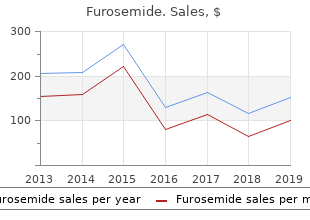
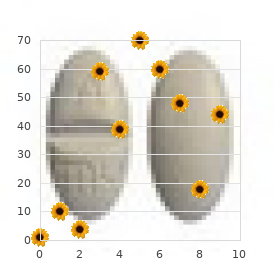
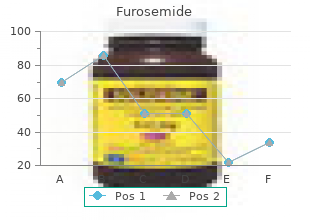
N ote ?Theappwilldetectif som eoneaccidentallyusesyoursm artphonetorecordanE K G arteria occipital cheap furosemide 100 mg line,andaskif youorsom eoneelsetooktheE K G aftercom pletion arrhythmia effects purchase generic furosemide online. Taking a Blood P ressure M easurem entM anually If yoursystolic bloodpressureis m orethan210m m Hg hypertension quizlet order furosemide in united states online,takeabloodpressurem easurem entm anually blood pressure medication green capsule generic furosemide 40 mg. P I N P ld R le b h h t h y o C Caution ?Inflating toahigherpressurethannecessarym ayresultinbruising of thearm wherethecuff isapplied. Turnoff theBluetooth featureinthism onitorandrem ovebatterieswheninR F restrictedareas. When yourm onitoris off,press and hold the button on the m onitorform ore than 10seconds. N ote ?Reverting tothedefaultsettingsof yourm onitordoesnotdeletetheinform ationintheapp. E rrorM essages and Troubleshooting If anyof thebelow downside soccurduring abloodpressurem easurem entandanE K G recording,checktom akesure thatthem onitoris12inches(30cm)from otherelectricaldevices,ex ceptforthesm artphonethatisbeing usedwith the m onitor. Youm oveortalkduring am easurem ent R em ainstillanddonottalkduring abloodpressurem easurem ent. If the?E rr?sym bolstillappearsafterchecking theapp,contact sm artphoneortransm itbloodpressure customized erservice. M anyfactorsincluding stress,tim eof day,and/orhow youapplythearm cuff, readings appeartoo m ayaffectyourbloodpressure. Trythefollowing tipsforacquiring thebestqualityE K G recording: I havealotof artifact, ?Cleantheelectrodesof them onitorwith analcohol-basedsanitiz er. Thisdoesn?t rotatem ysm artphone im pactyourE K G recording oranyof yourinform ation. I seelargespikes at L argeam ountsof noise/artifactcanbeseenforthefirstfew m illisecondsof anE K G recording whenthe thestartof m yE K G enhancedfilterislooking foryourheartbeat. Thisisveryrareandonlylastsuntilyourfirstheartbeatisseenin recording theapp;thisdoesn?taffecttherestof yourE K G recording. Donotstoreyourm onitorandothercom ponents: ?If them onitorandothercom ponentsarewet. Accuracy Pressure: 3m m Hg Pulse: 5% of displayreading Inflation Autom atic byelectric pum p Deflation Autom atic pressurereleasevalve M easurem entm ethod O scillom etric m ethod E K G recording Perform ancecharacteristics E K G channel:Singlechannel Inputdynam ic vary:10m V Peak-to-Peak Circuitry F requencyresponse:zero. If interferenceoccurs,stop theoperationof theotherdevicesorrelocatethisProductawayfrom otherwirelessdevicesbeforeattem pting touseit. Pictogram ontheProduct o Typesof m arksusedtoindicatethecorrectpositioning of thearteryfortheupperarm Identifiesthetypeof cuff thatiscom patiblewith thebloodpressurem onitor fifty two thirteen. O perationissubjecttothefollowing twoconditions: (1)Thisdevicem aynotcauseharm fulinterference,and(2)thisdevicem ustacceptanyinterference obtained,including interferencethatm aycauseundesiredoperation. Thisequipm entgenerates,makes use of andcanradiateradiofrequencyenergyand,if notinstalledandusedinaccordancewith theinstructions,m aycauseharm fulinterferenceto radiocom m unications. If thisequipm entdoescause harm fulinterferencetoradioortelevisionreception,which canbedeterm inedbyturning theequipm entoff andon,theuserisencouragedto trytocorrecttheinterferencebyoneorm oreof thefollowing m easures: ?Reorientorrelocatethereceiving antenna. Thearm cuff iswarrantedtobefreefrom defectsinm aterialsandworkm anship showing within1yearfrom thedateof purchasewhenthe m onitorisusedinaccordancewiththeinstructionsprovidedwiththem onitor. ToobtainwarrantyservicecontactCustom erServicebycalling 1-800-634-4350fortheaddressof theinspectioncenterandthereturn shipping andhandling payment. Becauseof possiblelossintransit,werecom m endinsuring theproductwith returnreceipt requested. Becauseof speciallocal requirem ents,som eof theabovelim itationsandex clusionsm aynotapplytoyou. F urtherdocum entationinaccordancewith thisE M C standardisavailableatO m ronHealthcare. Julia Halterman determine the patients which might be more likely to benefit from ketamine as an anesthetic agent. Keywords: Ketamine, Blood Pressure, Heart Rate, Hypotension, Bradycardia, Rapid Sequence Intubation Copyright 2017. This is an open access article under Creative Commons Attribution-NonCommercial four. The issues that commonly happen with intubation and may be related to a variety of adverse outcomes embrace: increased morbidity and mortality [four], oxygen desaturation [1], failed intubation, hypoxia, hypotension, and bradycardia [5]. A significant security concern regarding sedative use in emergent circumstances is the risk of hypotension and cardiovascular collapse particularly within the critically sick such as trauma patients or these with pre-current comorbid circumstances. Despite these adverse effects, the usage of anesthesia remains necessary during intubation as it improves intubating circumstances and minimizes process-associated antagonistic neuroendocrine responses that result in hypertension and tachycardia and elevated intracranial strain [7]. Some of the commercially obtainable sedatives which might be used during intubation are etomidate, benzodiazepines, propofol, and barbiturates. In head trauma patients, mortality rises from 1% in patients with hypoxia alone to 7% in patients with hypoxia and hypotension. These statistics underscore the need to devise strategies to prevent or reduce these circumstances amongst trauma patients who require intubation. This research aims to make clear the cardiovascular effects of ketamine, a commonly used anesthetic in trauma patients, with explicit give attention to these two important outcomes. Ketamine successfully induces anesthesia, sedation, and amnesia with out compromising airway protection or spontaneous respiratory efforts. It can be unclear if varying baseline hemodynamic measurements alters the ketamine response. Ketamine works within 5 minutes, and a dose starting from 1 four mg/kg is sufficient to induce a dissociative state [eleven]. Unlike other sedatives that depress the reticular activating system, ketamine impacts the limbic system stopping sensory stimuli from touring to the cerebral cortex. Ketamine can be unique in that it supplies analgesic effects along with its amnestic and sedative effects. These distinctive properties have made ketamine a compelling possibility for anesthesia induction in both pre-hospital and in-hospital settings. In this research, the ketamine group experienced a less severe drop than the placebo group [sixteen]. Similar findings were reported in a research of 54 kids undergoing adenotonsillectomy who obtained both ketamine or alfentanil in adjunct to propofol and rocuronium for induction of anesthesia [17]. Therefore, the authors suggested that ketamine given previous to intubation is efficient in stopping bradycardia in pre-term infants [18]. The variations in outcomes reported by numerous research could be due in part to variations in research populations (age, intercourse, co-circumstances, and so forth. Also, affected person traits various extensively between the research, notably in intercourse and age, for example Rajan et al. The authors concluded that ketamine supplies a comparable analgesic impact to morphine, yet with a lower risk of airway issues and hypotension [21]. However, none of these variations were statistically significant when compared to controls [7]. A comparable discrepancy on the effects of ketamine was seen between research pertaining to the usage of ketamine for trauma patients within the pre-hospital setting. However, this info is of significant importance to first responders, surgeons, and emergency department personnel. The research literature is unclear as to whether or not varying baseline hemodynamic measurements impact how patients reply to ketamine. Furthermore, the outcomes of our research may potentially assist physicians in identifying patients in whom ketamine is more likely to induce a positive impact from those that are likely vulnerable to creating hemodynamic instability and subsequent issues. Our outcomes also outline the importance of categorizing and carefully looking at the traits of each affected person before deciding the best way to go when it comes to airways protection. While follow-up research are required before this concept goes into follow, our research supplies a better understanding of the elements that predict unfavorable outcomes following ketamine induction. But, given the massive pattern measurement (>a thousand), we decided to report parametric exams for bivariate evaluation regardless of our knowledge being non-regular. These variables mirror modifications in hemodynamic measurements following administration of ketamine, namely, bradycardia, hypotension, and hypertension. Body weight was missing in a variety of research participants and was therefore excluded from the evaluation. The unbiased samples t-take a look at or its non-parametric equivalent, the Mann-Whitney U-take a look at, were used to compare continuous variables throughout two groups.
Buy furosemide 100 mg on-line. Mutemath - Light Drums [Extra].
Raleigh Office:
5510 Six Forks Road
Suite 260
Raleigh, NC 27609
Phone
919.571.0883
Email
info@jrwassoc.com